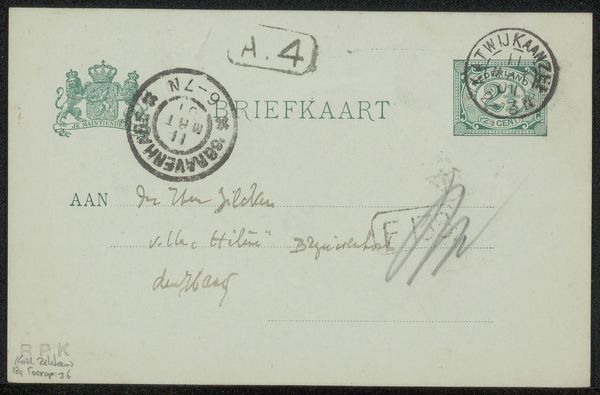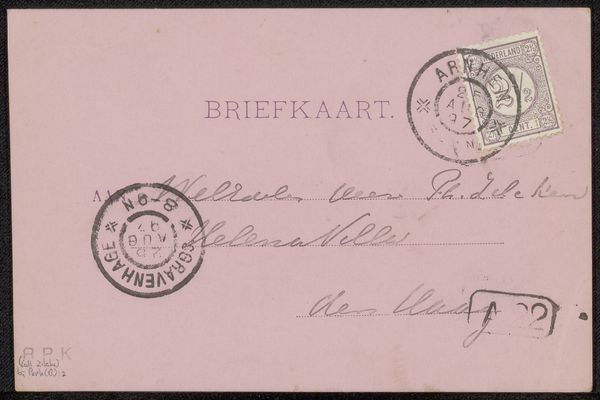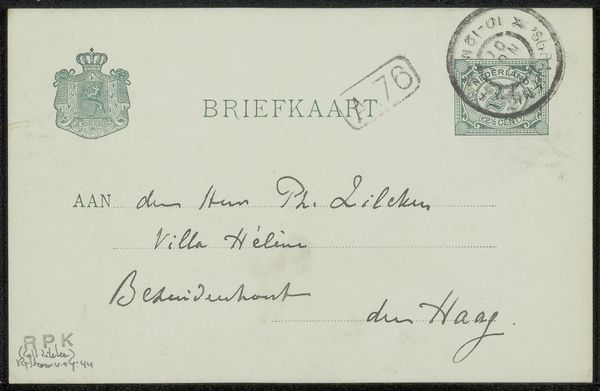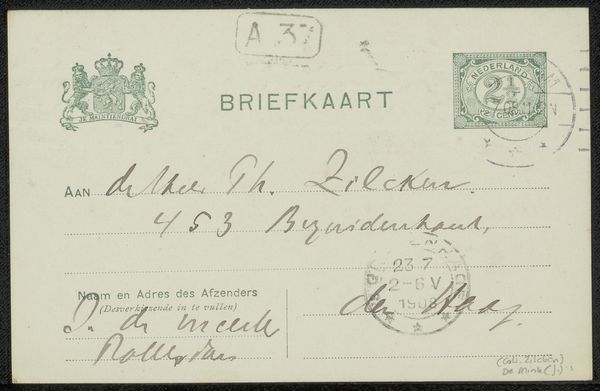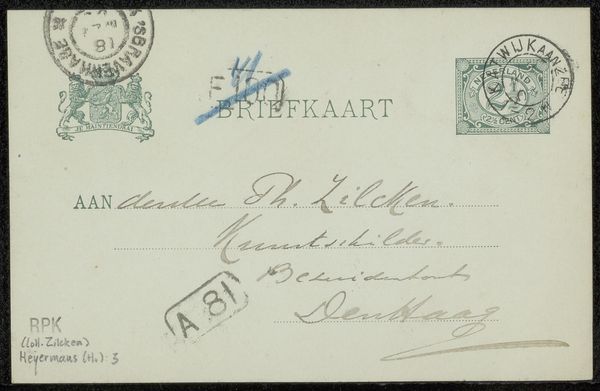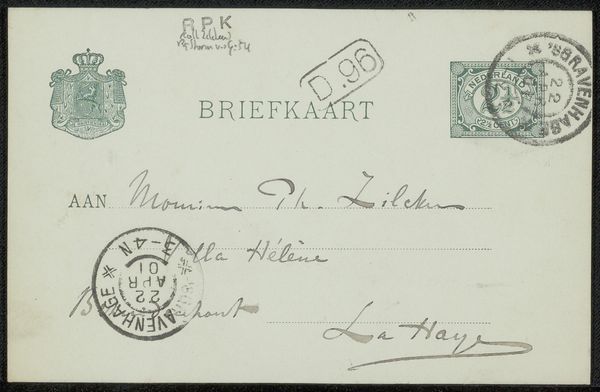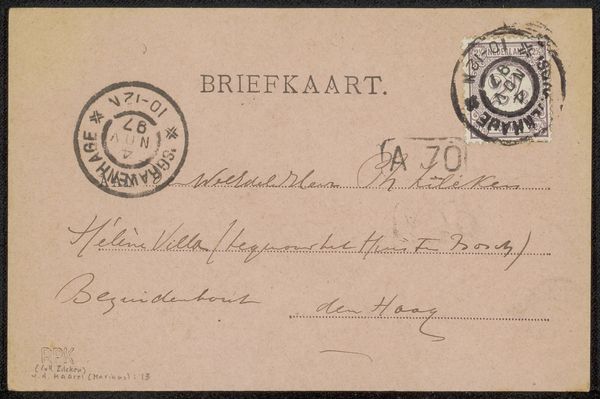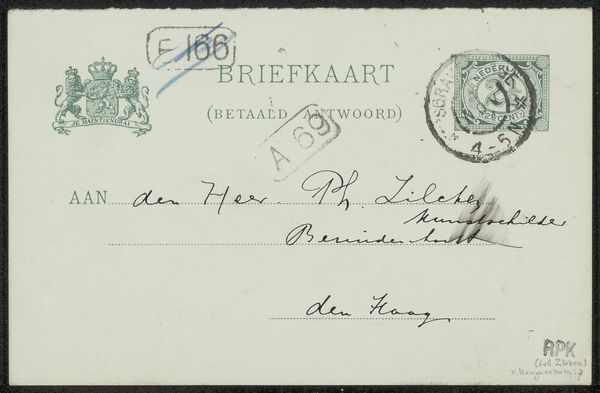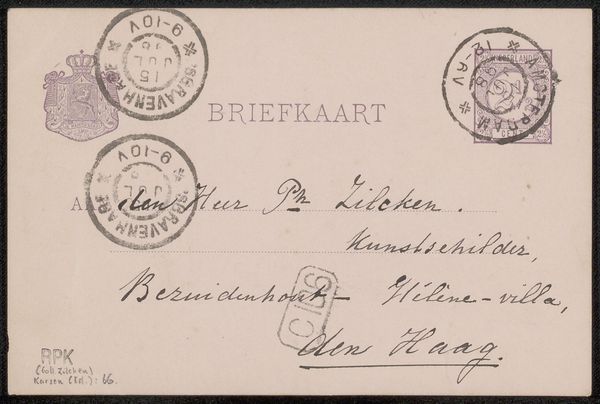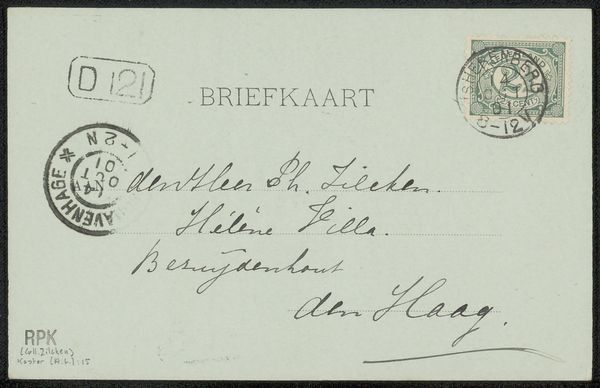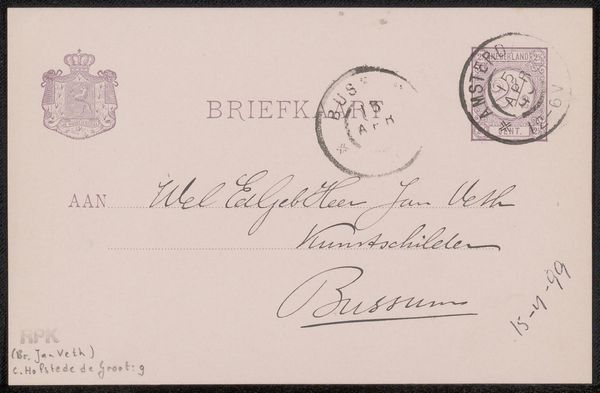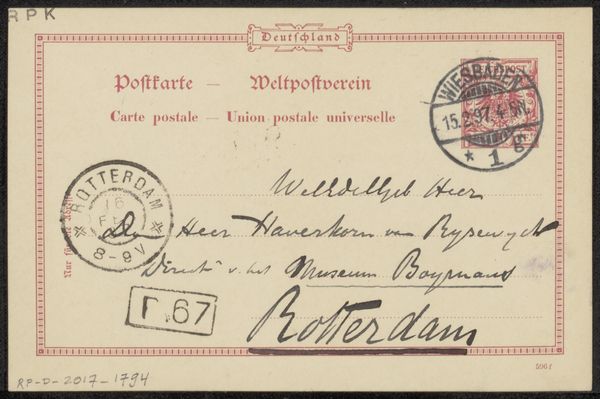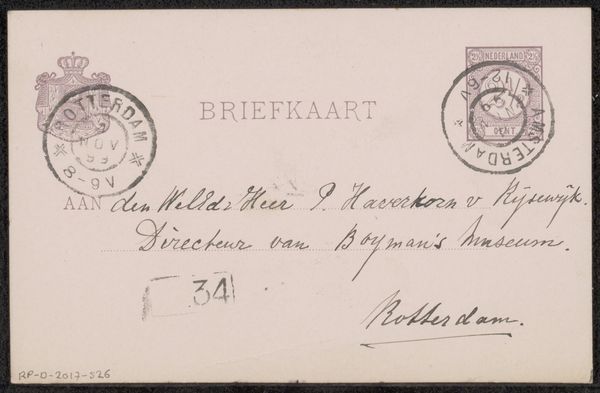
Copyright: Rijks Museum: Open Domain
Curator: The quiet precision of this drawing speaks volumes, doesn’t it? It’s a postcard, likely from sometime between 1904 and 1912, addressed to Philip Zilcken. The materials are humble – ink on paper – but there's such delicacy in the lines. Editor: There is, yes. At first glance, the handwriting whispers of old stationery and forgotten correspondence. The slightly faded ink, those swirling flourishes—it's evocative. A moment caught and kept, or at least an intention thereof. Curator: Absolutely, an intention, beautifully presented in monochrome; so many marks on what had once been a clean, crisp space. To me, a plain old postcard speaks of secrets; especially those sent within cities to those with Villas. We read “Villa Helena,” Den Haag. It's less about what is being stated and more about its suggestion, its presence. And what is "Briefkaart" but a calling card, in and of itself? A calling for association, from a somebody or somewhere we will likely never know. Editor: I'm fascinated by how this piece uses common imagery—a crest, postage marks—to both convey a practical message and embed cultural values. Royal authority, commercial exchange, place all signified by the emblems. Curator: It's that balance, right? Officialdom and a hint of private longing or even humour, perhaps. Notice the way the handwriting tilts and swashes; It gives it such personal feeling – completely at odds with the rather heavy seriousness of the bureaucratic stamps on the card's top border, yet both exist on the same plain piece of card. Editor: Symbols working together; they lend weight to that era, don't they? To a world preoccupied with social cues, the way these small aesthetic choices must’ve amplified or altered whatever message that card once contained. I'm left wondering about the unspoken implications—did the choice of font or ink colour contribute to, say, social status? Curator: Yes, but what's really wild is thinking about all those layers existing now, today, in this viewing. So that even beyond time’s grand unravelling there exist subtle codes we still recognise - on an emotional and cultural level - more than a century on. The ghost in the machine? I really believe this piece contains those hidden histories, or at least it conjures the idea within me. Editor: I agree wholeheartedly. This piece reminds me that images aren’t simply seen, but felt; the past continues its dialogue into our present through symbols like these.
Comments
No comments
Be the first to comment and join the conversation on the ultimate creative platform.
